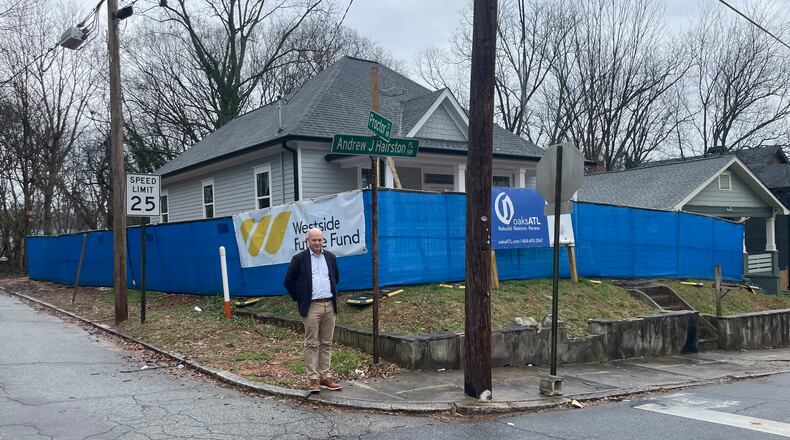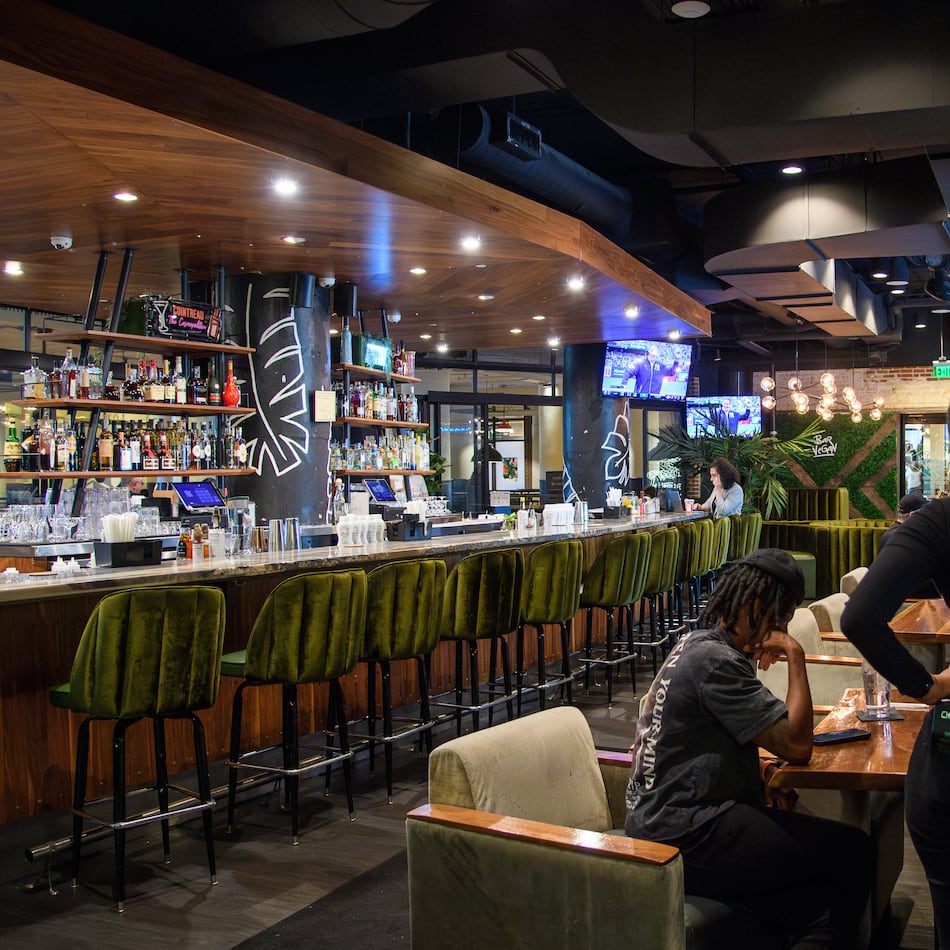Perhaps Dr. James P. Brawley’s family should no longer be ashamed of the street bearing his name.
In 2015, I sat on the porch of a retired bus driver who lived on Brawley Drive, named for a former Clark College president, and watched a sad, dangerous and pathetic parade of drug dealers, copper thieves and homeless people.
“I live here, but I’m not a part of it,” Howard Joiner said that day, of the English Avenue neighborhood where he grew up. “I like to go other places for a change of scenery sometimes. I call it civilization. We wish they’d come through and revitalize this area and give us an offer.
“We’re ready to move.”
Joiner still lives there but is getting his wish: The neighborhood is finally seeing revitalization.
Back then, Mayor Kasim Reed started the Westside Future Fund, a nonprofit to help stabilize four neighborhoods west of the new Mercedes-Benz Stadium. Two decades earlier, a load of promises came with construction of the Georgia Dome but the adjoining neighborhoods continued to wither.
City officials promised that would not happen again.
English Avenue is an old neighborhood just a stroll from the Georgia Dome, and had fallen into hellish blight. Known as “The Bluff,” druggies could score heroin or crack and dart back on the Downtown Connector.
Credit: Miguel Martinez-Jimenez
Credit: Miguel Martinez-Jimenez
Last week, I toured the area with John Ahmann, CEO of the Future Fund since 2016. He wanted to show me a decade of transformation.
“We prioritized buying up land in the Brawley corridor,” he said. “We’re focusing on this to show what change looks like.”
He seemed to know the story behind each property.
“We’re going to knock this one down,” he said, pointing to a dilapidated bungalow.
“That’s ours, we fixed those up,” he said. “That lady there is in the tax fund,” which abates taxes for longtime residents. “That’s an outside investor,” he said of a boarded-up home.
“There’s the infamous Yellow Store,” he said, of a former corner hangout. “We bought this to help shut down the drug trade.”
As we rolled south toward Joseph E. Boone Boulevard, he named celebs. “Killer Mike owns that,” pointing to a multiunit building.
And he pointed to a shabby liquor store and large vacant lot that, he said, is owned by the rapper T.I.
Large residential complexes are being built on and near Boone, as developers have discovered the neighborhood. Or, more so, it’s finally worth the economic effort.
Not all is copacetic. I spoke with Daryl Dismukes, who has for years been squatting in a vacant home with his wife and two others. Police have told them they need to leave, he said, “But it’s hard for us to move.”
In 2015, I surveyed the half mile of Brawley north from Boone. More than two-thirds of the 80 or so structures were vacant or caving in. Few had even seen a paintbrush in years. There were 20-plus vacant lots.
Credit: Bill Torpy
Credit: Bill Torpy
Today, some 45 structures are lived in, most of them new or renovated. Only 16 were vacant. There are now maybe 35 empty lots, as many of the ruins have been cleared. The Westside Fund has improved 34 of those properties.
The organization tried to quietly buy up properties to prevent increased speculation. Many investors snapped up properties for next to nothing after the 2008 crisis and then allowed the structures to rot as the neighborhood hollowed out.
In 2017, some 400 properties in English Avenue and Vine City were blighted — nearly 1 in 4. And 600 homes sat vacant. The blight has been halved, the Westside Fund says.
Ahmann, who is white, was not immediately embraced by a community used to being left behind.
“There was a worry this was some kind of feint,” he said. “Part of the journey is you keep showing up. Trust is earned.”
The movement is funded by philanthropic sorts like the Arthur Blank Foundation and Chick-fil-A. More than $130 million has been spent buying 40 acres and building more than 1,200 affordable single and multifamily homes. They are in the midst of a campaign to raise another $55 million.
It seems to be working. The streets are not nearly as depressing, residents say.
“It’s coming back; it’s well back,” said Christopher Joiner, son of the MARTA driver I spoke with in 2015. “It’s nice to look out and not see people hanging on the corner. It’s not The Bluff anymore. That’s history.”
Credit: Westside Future Fund
Credit: Westside Future Fund
Joiner grew up there as drugs and poverty ravaged the community. In fact, he was one of those hanging on those corners and had his trouble with the law.
“I was a product of my environment,” he said. “The place was off the chain.”
He said the program to have cops live in the neighborhood, the renovation of decaying houses and the closure of the Yellow Store on his corner all gave the neighborhood momentum.
I knocked on his family’s door 10 years ago because the ramshackle house next door was the flashpoint of a battle between Mayor Reed and investor Rick Warren, who had bought up many old houses and wasn’t renovating them quickly enough.
Today, that house is brand spanking new, rebuilt by the Westside Fund. In fact, the Fund bought a lot of Warren’s properties, and he has shifted his operations just west of English Avenue.
Warren said he didn’t want to compete with a large entity like the Westside Fund and that the properties to the west aren’t as run down.
He appreciates the progress in English Avenue. But, he said, the community will be squeezed from the east by Georgia Tech and from the west where the Beltline is coming in.
The Bluff seems to always be under siege.
About the Author
Keep Reading
The Latest
Featured






